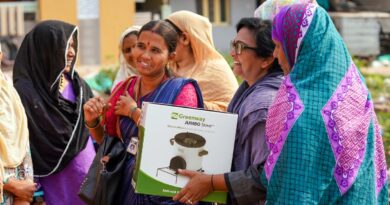Dispelling the myths about Rural Electricity in India
 Rural India, Now, better understood
Rural India, Now, better understood
The session titled ‘Rural Electricity access in India: Taking a leap from grid availability to customer service’ was moderated by journalist Sreenivasan Jain of NDTV, alth0ugh the real anchor seemed to a be a special research report based on a survey of rural households, that was conducted across Bihar, Orissa, Uttar Pradesh and Rajasthan. The research report itself came up for some questioning, thanks to the incredible speed of change in rural connectivity even as the report was being compiled, which meant that the numbers for UP for instance, have already changed significantly between the survey in October and today. However, that didn’t detract from the basic message of the report, especially when it comes to discom performance and opportunities to improve and plan better for these markets.
Sidharth Vermani, Senior Director, SmartPower India set the tone for the session while introducing the report. Pointing out that there were quite a few rural myths that the report busts, or challenges. From the myth of cheap, subsidised power in rural areas, to the myth of rural people being unwilling to pay for power.
This was a point developed further by Jaideep Mukherji, CEO, Smart Power India, who spoke about the need to fill in the gaps, in our understanding of rural power demand and access. He pointed to customer satisfaction as a key area, or the need to treat rural customers as customers, rather than ‘beneficiaries’. Or how micro enterprises still have wide gaps in access, depending instead on DG sets or other expensive power sources. Discoms needed to step up their game in these areas, as poor billing practices make a bad situation worse in rural areas. With bills being dumped on 3 or 6 month basis, with poor servicing of queries, was the single biggest problem out there. With customers carrying the burden of the poor numbers this reflects. This led to paradoxes like 34% people believing power was ‘affordable’ mainly because of the back up measures consumers were forced to resort to once they move to a lifestyle where electricity is an essential component.
Mr Ajay Mathur, Director General, TERI made a point about connectivity not being equal to supply. He stressed on the role distributed grids, or independent micro grids still have to play in filling rural demand and need for electricity. He highlighted how the report had discovered that consumers were actually willing to pay a premium for reliable power, a rarity in large parts of rural Indian today. He urged industry to look at energy efficient appliances as well to prepare for the next wave of demand that will come with better access.
Ms Mohua Mukherjee, Program Ambassador, ISA made a strong pitch for distributed solar in rural India. She highlighted the many solar powered options, be it chillers, solar pumps, fans, lights etc that are now available in the market. She urged the government and industry to step up to enable a bigger market for these, by enabling a stronger distribution network, and making them more affordable. Referring to the massive drop in LED prices after the government stepped in through EESL, she spoke about the 4 key markets they see. Personal Household markets, Community markets where productivity enhancement options like milk chillers, oil expellers, grain milling etc needed to be affordable for the community to benefit. Third, public service delivery establishments like rural chools, healthcare centres etc with reliable lighting and fans and possibly even TV’s running on solar power. Finally, public safety, with options like solar street lights, public drinking water facilities etc, that will serve to deliver critical public goods with transformative potential. India’s intermittent grid, and abundance of sunshine, ensures that with affordability, demand can explode in rural areas. That means a need for appliances that run on AC power when grid is available, and DC when it isn’t, through solar power. There is an opportunity for India to become a global hub in this area, with a 4 billion people market out there.
Mr. KK Mishra, Ministry of Power highlighted the fact that the report was not too different from their own learnings at the ministry, and to that extent, serves to validate their views well. He urged people to appreciate the effort that has gone into providing access, which is a critical starting point. The next target will be 24X7 power from April 1 2019, which will require intense work with state governments. He also expressed surprise at a recent international report which indicated that electricity is not providing the kind of utility to rural poor as expected. Mr Mishra was a votary of grid power over micro grids clearly, as might be expected, representing the government as he was.
Mr. RP Gupta, Additional secretary (Energy), Niti Ayog was more focused on the cost of energy, stressing that grid power is cheaper over other options. Thus, for him, making the grid power more reliable was a key objective, especially as the share of renewables in the grid inches up. He welcomes the report for removing perceptions like willingness to pay, while giving the example of Gujarat, where the experience has been very positive in terms of people paying well for quality power. With a major impact on the rural economy.
A key takeaway from the session was clearly about the need to consider the elephant in the room, namely the discoms. Without fixing the many issues plaguing them, it will always be a challenge to deliver rural electricity meaningfully. Political distortions like free power, poor billing, lack of action against theft, or even lethargic maintainence of the grids, are major issues that are all contributors, and hopefully on the radar, and not under it, as India looks to empower all its citizens with a right to electricity supply.




